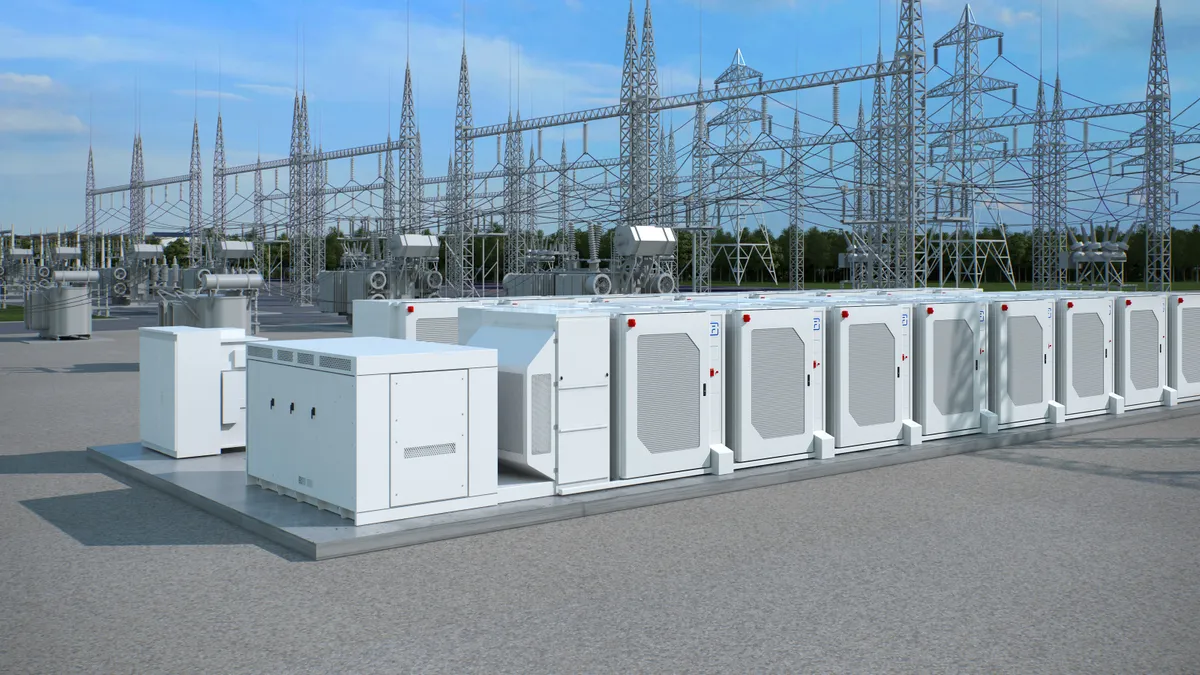Dive Brief:
- In its first earnings call as a publicly-traded company, energy storage firm Fluence said it expects to bring in more than $1 billion in revenue in fiscal year 2022 as governments and utilities ramp up their share of renewables.
- CEO Manuel Perez Dubuc said Fluence, which started in 2018 as a joint venture of manufacturing giant Siemens and electric power firm AES, is "uniquely situated to drive the global transition to clean energy." The storage market, he added, is "getting more and more momentum," and Fluence stands to gain by dabbling in both storage installation and digital platforms.
- According to its Q4 earnings statement, the company contracted 1,311 MW of energy storage products and 1,959 MW of energy service contracts. Overall, revenues for fiscal year 2021 were $680.8 million, a 21.3% increase from the previous year.
Dive Insight:
Fluence went public in October in a $1 billion initial public offering as one of several energy storage firms that went public as the industry seeks to capitalize on the decarbonization of the electric grid. The company specializes in technology that can facilitate storage installations, including the Fluence IQ digital platform, which allows operators to maximize bidding on the electricity wholesale market to draw the most revenue from renewable and storage assets. According to the Q4 earnings statement, Fluence secured 2,744 MW in contracts for Fluence IQ.
Among the key deals for the company this year was a 105 MW storage portfolio signed in Europe as well as the company's first entry into the Taiwan market in December. The Fluence IQ platform was also signed for a 150 MW contract in Australia in November and Fluence now holds about 20% of the renewable share in that country. Chief Digital Officer Seyed Madaeni told investors on the Q4 earnings call that Fluence also expects to grow in California and Texas, especially after the blackouts there in February's winter storm. The company has a $1.7 billion backlog as of the end of the fiscal year.
However, Fluence also saw net losses rise from $47 million in fiscal year 2020 to $162 million in fiscal year 2021. That was in part due to supply chain issues that have affected the worldwide economy, as well as project suspensions because of the Covid-19 pandemic, according to the company.
Chief Financial Officer Dennis Fehr said leadership views the delays as "temporary with expectations that [they] will be resolved" by the second half of 2022. In order to counter shipping delays that have further delayed contracted projects, Fehr said Fluence has secured "guaranteed availability with tier one shipping companies."
Dubuc also said the company and its partners are still investigating a September incident that saw a 300 MW/1,200 MWh storage system at Vistra Corp's Moss Landing Energy Storage Facility in Monterey Bay, Calif. go offline after a number of battery modules overheated. The facility is still offline, Dubuc said, adding that the incident hasn't had a discernible impact yet on the company's financial results.
A recent forecast from BloombergNEF predicted that global energy storage deployments would reach 358 GW/1,028 GWh by the end of the decade, twenty times more than 2020 levels. The Energy Information Administration predicts that there could be some 10,000 MW of new storage installed between 2021 and 2023 as part of the grid transition.
Storage was also a key topic at the United Nations climate summit in Glasgow this fall, including the launch of the Long Duration Energy Storage Council, a consortium of tech and energy companies promoting storage technology.
Dubuc said that Fluence, as a storage technology company and not a battery manufacturer, is well positioned to ride the market's evolution and "move quickly … as better solutions come to the market." He added that there are strong tailwinds in the passage of the infrastructure bill and the discussion of the Build Back Better budget reconciliation bill resolutions, which would both fund an expansion of renewable energy in the U.S.
"Enactment of this legislation will create a stable, long-term demand signal needed to accelerate the clean energy transition and to incentivize a robust energy storage supply chain, domestically and abroad."














